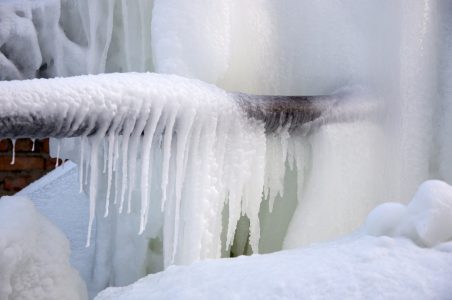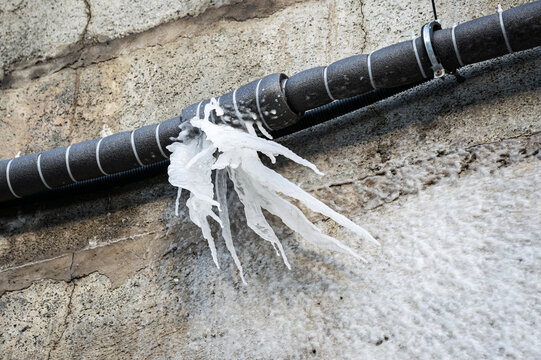Ways to Protect Your Plumbing from Cold Weather: Critical Strategies
Ways to Protect Your Plumbing from Cold Weather: Critical Strategies
Blog Article
Just how do you actually feel in regards to How To Avoid Freezing Pipes?

Winter can wreak havoc on your plumbing, particularly by freezing pipelines. Right here's how to prevent it from happening and what to do if it does.
Introduction
As temperature levels decrease, the danger of icy pipes increases, possibly causing costly fixings and water damage. Understanding exactly how to prevent icy pipes is critical for house owners in cool climates.
Avoidance Tips
Insulating prone pipes
Wrap pipelines in insulation sleeves or use warm tape to shield them from freezing temperatures. Focus on pipelines in unheated or external areas of the home.
Heating methods
Maintain indoor rooms sufficiently heated up, specifically locations with pipes. Open up closet doors to allow warm air to circulate around pipelines under sinks.
Exactly how to determine frozen pipelines
Try to find reduced water flow from taps, unusual odors or sounds from pipes, and visible frost on revealed pipes.
Long-Term Solutions
Architectural modifications
Consider rerouting pipelines away from outside walls or unheated locations. Add added insulation to attics, cellars, and crawl spaces.
Upgrading insulation
Buy premium insulation for pipes, attics, and wall surfaces. Proper insulation aids maintain constant temperature levels and decreases the danger of icy pipes.
Securing Exterior Plumbing
Garden pipes and exterior faucets
Separate and drain pipes yard pipes before winter. Mount frost-proof spigots or cover outside taps with shielded caps.
Understanding Icy Pipes
What creates pipelines to freeze?
Pipelines freeze when subjected to temperatures listed below 32 ° F (0 ° C) for expanded periods. As water inside the pipelines freezes, it broadens, taxing the pipeline walls and possibly creating them to burst.
Dangers and problems
Icy pipes can result in water disruptions, building damage, and expensive repair work. Burst pipes can flood homes and trigger substantial architectural damages.
Indications of Frozen Water Lines
Recognizing icy pipes early can avoid them from bursting.
What to Do If Your Pipes Freeze
Immediate activities to take
If you believe icy pipes, keep taps open up to eliminate stress as the ice thaws. Use a hairdryer or towels taken in warm water to thaw pipes gradually.
Conclusion
Avoiding icy pipes needs aggressive measures and quick actions. By recognizing the causes, indications, and safety nets, home owners can protect their plumbing during winter.
5 Ways to Prevent Frozen Pipes
Drain Outdoor Faucets and Disconnect Hoses
First, close the shut-off valve that controls the flow of water in the pipe to your outdoor faucet. Then, head outside to disconnect and drain your hose and open the outdoor faucet to allow the water to completely drain out of the line. Turn off the faucet when done. Finally, head back to the shut-off valve and drain the remaining water inside the pipe into a bucket or container. Additionally, if you have a home irrigation system, you should consider hiring an expert to clear the system of water each year.
Insulate Pipes
One of the best and most cost-effective methods for preventing frozen water pipes is to wrap your pipes with insulation. This is especially important for areas in your home that aren’t exposed to heat, such as an attic. We suggest using foam sleeves, which can typically be found at your local hardware store.
Keep Heat Running at 65
Your pipes are located inside your walls, and the temperature there is much colder than the rest of the house. To prevent your pipes from freezing, The Insurance Information Institute suggests that you keep your home heated to at least 65 degrees, even when traveling. You may want to invest in smart devices that can keep an eye on the temperature in your home while you’re away.
Leave Water Dripping
Moving water — even a small trickle — can prevent ice from forming inside your pipes. When freezing temps are imminent, start a drip of water from all faucets that serve exposed pipes. Leaving a few faucets running will also help relieve pressure inside the pipes and help prevent a rupture if the water inside freezes.
Open Cupboard Doors
Warm your kitchen and bathroom pipes by opening cupboards and vanities. You should also leave your interior doors ajar to help warm air circulate evenly throughout your home.

I'm certainly very curious about 6 Ways to Prevent Frozen Pipes and I hope you enjoyed reading our blog posting. Those who liked our page if you please don't forget to share it. I value reading our article about Preventing and dealing with frozen pipes.
Call Today Report this page